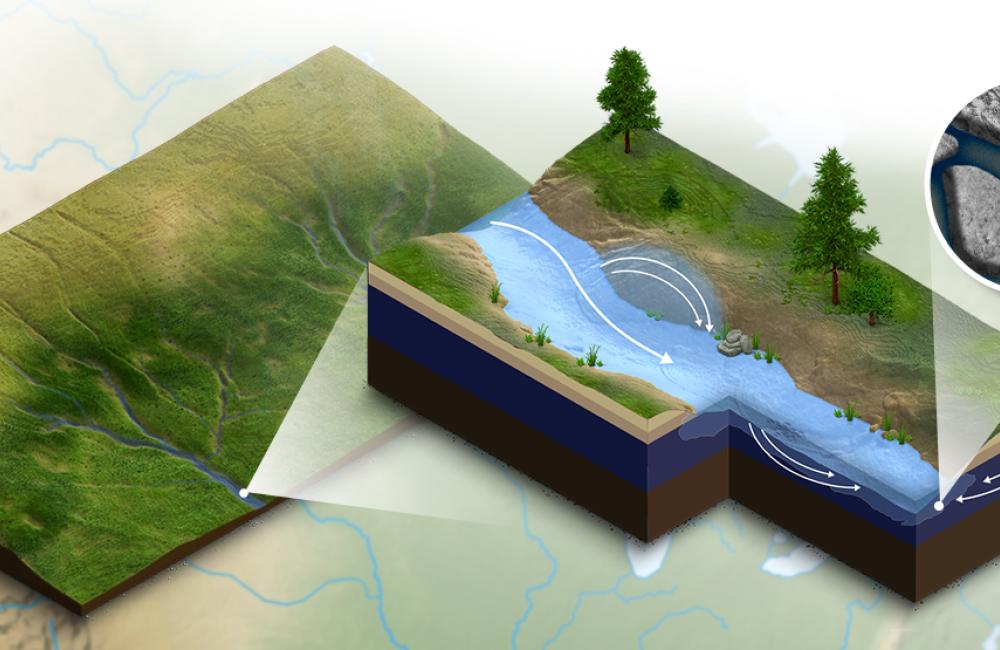
An ORNL research team has incorporated important effects from microbially active hot spots near streams into models that track the movement of nutrients and contaminants in river networks. The integrated model better tracks water quality indicators and facilitates new science. Credit: Andy Sproles/ORNL, U.S. Dept. of Energy
A new modeling capability developed at Oak Ridge National Laboratory incorporates important biogeochemical processes happening in river corridors for a clearer understanding of how water quality will be impacted by climate change, land use and population growth.
Researchers used high-performance computing and the award-winning Amanzi-ATS software to include biogeochemical reactions in microbially active zones near streams in models that track the movement of dissolved chemicals in river networks. These reactions have a major influence on the cycling of carbon, nutrients and contaminants at basin scales. The new multiscale model better tracks water quality indicators such as nitrogen and mercury levels.
"To build a next-generation modeling capability to address water quality issues, we needed a new multiscale framework that allows us to incorporate fundamental understanding of key processes and how those fine-scale processes manifest at much larger scales," ORNL's Scott Painter said.
The research team validated and demonstrated the model on several watersheds.






